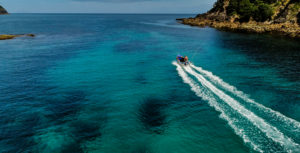Fishing FAQs
All FAQs |
Customary Fisheries | Fisheries Management | maximum sustainable yield | QMS | Economics | Fishing | Rescue Fish | Environment | Fishing methods | Recreational Fishing | Fishcare | customary | Kahawai | Reform scam | Baitfish | Scallops | Crayfish | WRC decision | Marlin | Reef fish
July 18, 2025
Recreational fishers typically catch less than 5% of the total amount of fish caught annually from commercial fishers in New Zealand. This figure can slightly differ year by year. For example in 2023, recreational fishers took home less than 2% of the total fish caught by commercial fishers. Sources: 2022-23 National Panel Survey 2017-18 National ... Read more.
 January 11, 2021
A common thread over summer is that recreational fishers ought to release big snapper during spawning season because big fish are the best breeders. The ‘Put our breeders back’ argument is partially true – Bigger snapper can produce more eggs in a season, but it doesn’t mean all big snapper need to be released. If ... Read more.
November 2, 2020
Alternatives to trawling include long lining and trapping. While these alternative methods may be more time consuming they generally deliver better quality fish which ought to attract a higher value return.
November 2, 2020
It is unknown how long it would take for an area to recover from trawling because no one in New Zealand has deliberately stopped trawling and supported a research project on recovery rates.
May 29, 2020
Independent analysis by the NZ Institute of Economic Research shows that on the information available Māori own around 40% of quota shares (by volume) but only 10.7% of the total quota share value. This is a conservative estimate of iwi ownership and value because not all the relevant details are available; that is understandable given ... Read more.
May 22, 2020
There are 11 Mātaitai in the North Island and 35 in the South Island. 10 Taiāpure have been established nationally.
May 22, 2020
Commercial fishers land around 400,000 tonnes of fish per annum. In the fishing year from October 1st 2017 to 31st September 2018 commercial fishers landed just over 405,000 tonnes of fish.
May 22, 2020
The total amount of fish harvested by Māori customary fishers is unknown. The Minister of Fisheries has a legal obligation to make provision for Māori customary catch and traditional practices. The total amount of fish set aside to enable Māori fishers to fulfil their customary needs is around 4000 tonnes per annum, nationwide.
May 22, 2020
Recreational fishers harvest around 10,000 tonnes of finfish and shellfish nationwide every year. In shared fisheries targeted by commercial and non-commercial fishers, recreational harvest is estimated to be around 19% of all catch. Shared fisheries tend to be inshore species that more accessible to the public.
May 22, 2020
Fishing is a way of life for many Kiwis. It contributes to the mental well-being of individuals, families and communities. It provides for social occasions that enhance the bonds between individuals, their families and community. Recreational fishing also provides educational opportunities as a teaching space for safety on the water, weather awareness, food gathering, cooking, ... Read more.
January 11, 2021
A common thread over summer is that recreational fishers ought to release big snapper during spawning season because big fish are the best breeders. The ‘Put our breeders back’ argument is partially true – Bigger snapper can produce more eggs in a season, but it doesn’t mean all big snapper need to be released. If ... Read more.
November 2, 2020
Alternatives to trawling include long lining and trapping. While these alternative methods may be more time consuming they generally deliver better quality fish which ought to attract a higher value return.
November 2, 2020
It is unknown how long it would take for an area to recover from trawling because no one in New Zealand has deliberately stopped trawling and supported a research project on recovery rates.
May 29, 2020
Independent analysis by the NZ Institute of Economic Research shows that on the information available Māori own around 40% of quota shares (by volume) but only 10.7% of the total quota share value. This is a conservative estimate of iwi ownership and value because not all the relevant details are available; that is understandable given ... Read more.
May 22, 2020
There are 11 Mātaitai in the North Island and 35 in the South Island. 10 Taiāpure have been established nationally.
May 22, 2020
Commercial fishers land around 400,000 tonnes of fish per annum. In the fishing year from October 1st 2017 to 31st September 2018 commercial fishers landed just over 405,000 tonnes of fish.
May 22, 2020
The total amount of fish harvested by Māori customary fishers is unknown. The Minister of Fisheries has a legal obligation to make provision for Māori customary catch and traditional practices. The total amount of fish set aside to enable Māori fishers to fulfil their customary needs is around 4000 tonnes per annum, nationwide.
May 22, 2020
Recreational fishers harvest around 10,000 tonnes of finfish and shellfish nationwide every year. In shared fisheries targeted by commercial and non-commercial fishers, recreational harvest is estimated to be around 19% of all catch. Shared fisheries tend to be inshore species that more accessible to the public.
May 22, 2020
Fishing is a way of life for many Kiwis. It contributes to the mental well-being of individuals, families and communities. It provides for social occasions that enhance the bonds between individuals, their families and community. Recreational fishing also provides educational opportunities as a teaching space for safety on the water, weather awareness, food gathering, cooking, ... Read more.


